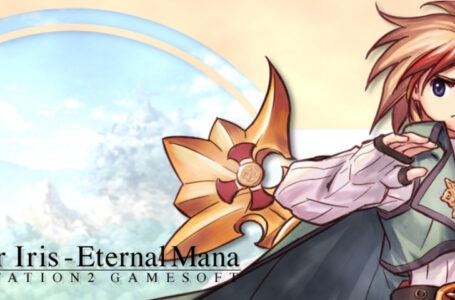Samurai Warriors 5: tight focus and gorgeous style makes this one of the best Musou games to date
Omega Force and Koei Tecmo’s Warriors series is one of the most broadly misunderstood in all of gaming. Having spent many years being misrepresented as mindless button-mashers, it’s kind of astonishing how long this series of strategic action games has managed to survive — and what varied experiences it is still able to offer after more than fifty individual releases on various platforms.
Probably the biggest strength of the Warriors series over the years has been how it has adapted to different historical (and fictional) time periods and settings, and from there how it has gone on to provide distinctive experiences for each of its subseries. The Samurai Warriors subseries, set in the Warring States or “Sengoku” period of Japanese history (1467-1615), has always provided a somewhat more tightly focused experience than its stablemates, usually involving a smaller cast of playable characters and somewhat more “personal” narratives. Samurai Warriors 5 leans more heavily into this side of things than ever before — and it only works to the game’s benefit.
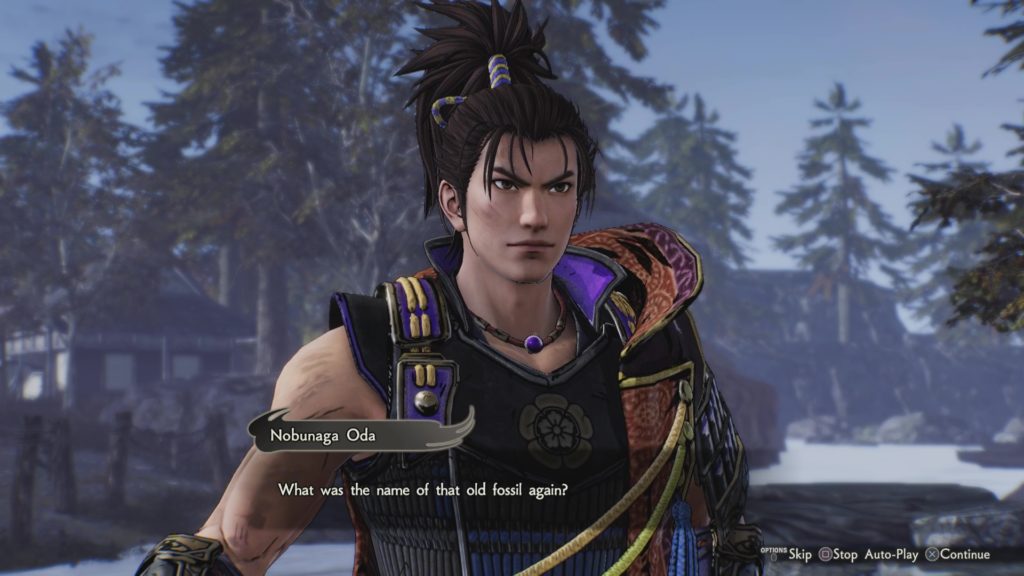
In Samurai Warriors 5, you initially take on the role of a young Nobunaga Oda, who has not yet developed his distinctive “samurai vampire demon” look from the earlier games in the series. Here, instead, Nobunaga is represented as a cocksure, somewhat reckless young man who is continually confident in his own abilities even when the odds are very much against him. The game then goes on to describe Nobunaga’s rise to power over the course of the early days of his career — and the parallel narrative of Mitsuhide Akechi, whose fate is intertwined with Nobunaga’s.
Enthusiasts of Japanese history will know that the relationship between Nobunaga and Mitsuhide escalated to a rather dramatic conclusion, so to focus Samurai Warriors 5 exclusively on the stories surrounding these two individuals makes a lot of sense — though it’s also a rather bold move on Koei Tecmo and Omega Force’s part. Among other things, the Warriors games have always been known for their extremely broad focus, typically telling stories that span hundreds of years and which involve an enormous cast of characters.
While the Samurai Warriors series has always typically featured a smaller playable cast than other Warriors subseries, its previous installments have still attempted to tell a broad-ranging narrative that covers the entirety of Japan throughout the Sengoku period. By deliberately limiting Samurai Warriors 5’s focus to the tales of Nobunaga and Mitsuhide, however, some series mainstays have ended up on the cutting room floor.
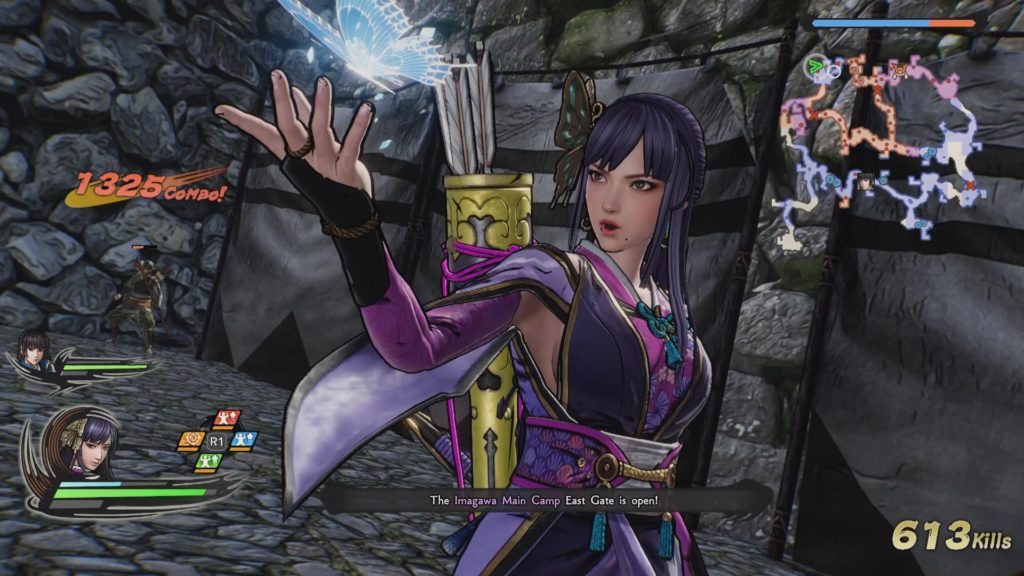
This isn’t necessarily a bad thing — however much I might miss Ginchiyo Tachibana — because it makes it more likely that you’ll actually experiment with all the available characters; Warriors Orochi’s Guinness World Record-breaking cast of 170 playable characters is all very well and good, but how many of them do you actually use? In Samurai Warriors 5, you’ll probably spend at least a bit of time with all of the 37 playable cast members at one time or another — especially given that the game’s main story mode tends to cast you in the role of specific individuals the first time you play each stage.
Speaking of the story mode, Samurai Warriors 5 makes an obvious effort to be one of the most accessible Warriors games to date, with plenty of helpful tutorials appearing as you play through the first chapter of Nobunaga’s narrative, gradually unlocking game elements as you go. This helps counter how overwhelming some other Musou games can be with their variety of different game modes and progression options — great for those new to the series.
Series veterans may find themselves wishing they could skip through this tutorial and get straight to having full access to everything in Samurai Warriors 5, but beating the initial chapter is not much of a time investment — and in doing so, you give a number of characters a decent start in their overall progression as well as developing a full understanding of how all the different mechanics work.
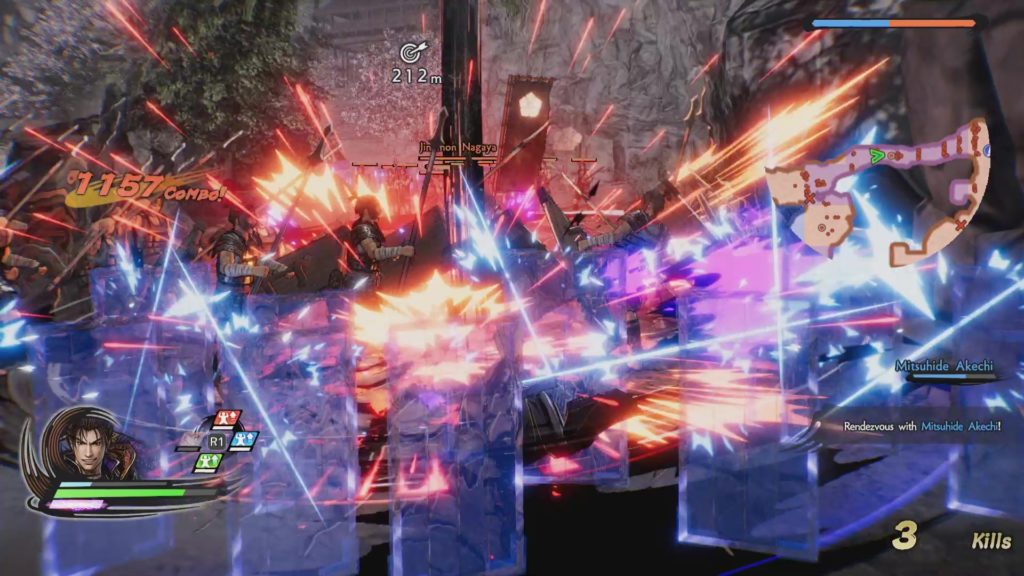
Structurally, the game is as a Warriors game always has been. The story mode unfolds one battle at a time, with narrative scenes unfolding between (and sometimes during) battles. Complete a battle and you have the opportunity to power up your officers and customise your forces in various ways; the further through the game you progress, the more powerful and varied options you’ll have in this regard.
Samurai Warriors 5 complements its main story mode with what it calls Citadel Mode, which is intended to be played alongside the story mode rather than treated as a “postgame” as in some other installments. Here, you’re presented with an array of small-scale, time-limited battles with a “score attack” element, and by completing these you have the opportunity to acquire resources required to upgrade your base’s facilities.
Upgrading these facilities allows you to develop your characters further and have a broader range of choices available when customising equipment — as such, it’s essential to engage with. More than that, though, it’s a great option if you fancy a bit of hack and slash but maybe don’t have the time for a longer story battle.
In combat, Samurai Warriors 5 will feel familiar to series veterans — though there are some nice changes to the basic formula. Most character-specific moves are still unleashed through pressing the weak attack button a number of times followed by the strong attack button, but Samurai Warriors 5 also adds a system called Hyper Attacks. By starting a combo with the strong attack button, you can make use of a gap-closing dash attack and then either follow this up with some more sweeping, wide-range attacks or smoothly transition into a regular combo. It’s slick, it’s elegant and it lends itself well to self-imposed challenges, such as attempting to combo your way through an entire stage.
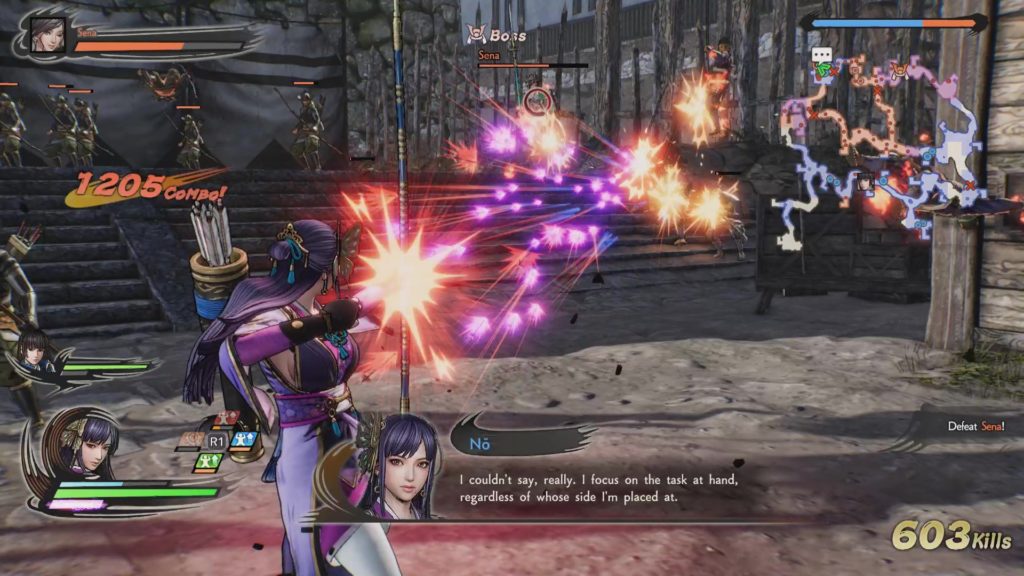
Elements that have worked well in previous Warriors games put in an appearance here, too. The addition of a lock-on system — surprisingly absent from even some of the more recent Warriors titles — is very welcome, and the Rage mechanic, similar to the Focus Spirit system from Hyrule Warriors, is always a lot of fun to trigger, particularly with its devastating, spectacular and explosive final attack.
An enjoyable addition to the formula is the Ultimate Attack system, which allows each character to equip up to four cooldown-based abilities according to the weapon they are wielding. These can either be temporary stat boosts — which take the place of stat-boosting items that appear around the playfield in other Warriors games — or active abilities that have specific effects or that are especially useful against certain types of foe. Nobunaga’s Final Fantasy Dragoon-style jumping Ultimate never gets old.
There’s also a “partner” system in place. In certain missions, you can pick both a main character and a partner character, and this means that during a battle you can order your partner to various places around the battlefield — or simply to follow you, if you prefer — and take care of things on your behalf. You can also switch directly to your partner and control them yourself if you prefer; this is a good means of taking control of opposite ends of a battlefield when the occasion demands it.
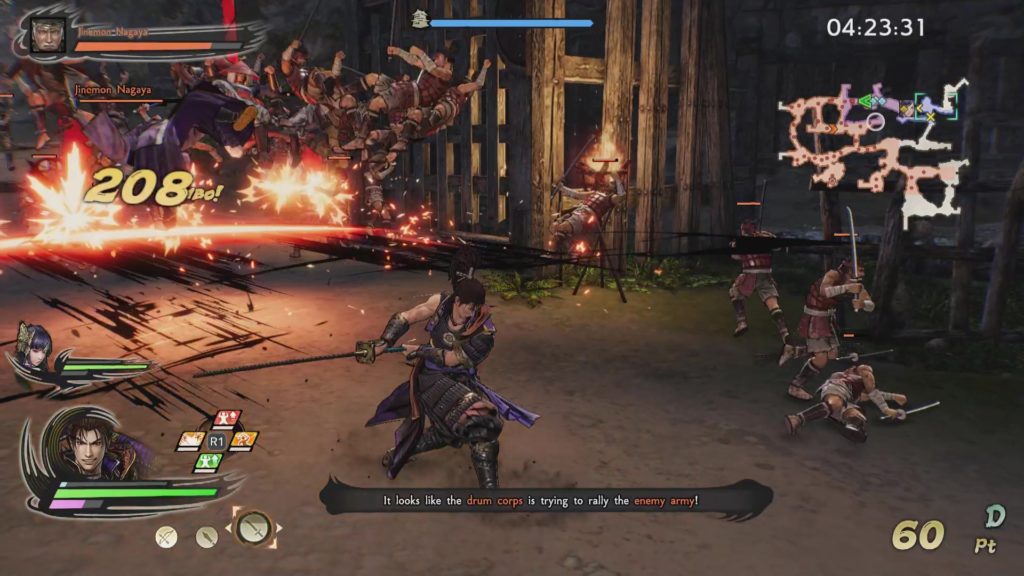
One distinctive game element that the Samurai Warriors series has always emphasised is the appearance of objectives throughout the course of a mission. While all Warriors games require you to complete certain requirements in order to beat a stage, Samurai Warriors 5’s objectives tend to reward exploration and discovery by allowing you to engage in optional skirmishes to obtain different rewards. In some cases, these are time-limited challenges that task you with defeating tough opponents against the clock, or perhaps making use of specific abilities to take down your foes. In others, you’ll simply uncover an optional enemy who needs a good kicking.
There’s a “collectible” element to these objectives; each story mode stage tracks not only your best grade (calculated as a combination of your number of kills, time taken, damage taken and highest combo) but also how many of the available objectives you completed. If you want to truly say you’ve mastered Samurai Warriors 5, you’ll want to replay stages and attempt to track down all the hidden Special and Bonus objectives.
Between missions, you have a number of options according to your progress through the story and the upgrades you’ve applied in Citadel Mode. The Dojo allows you to progress characters in various ways; the Blacksmith allows you to upgrade and customise weapons; the Shop lets you purchase new weapons, accessories and upgrade materials; and the Stables allow you to purchase new horses for mounted combat. (Mounted combat still kind of sucks, though; this is one aspect of Warriors that Omega Force has never quite managed to nail — though thankfully it can usually be safely ignored completely.)
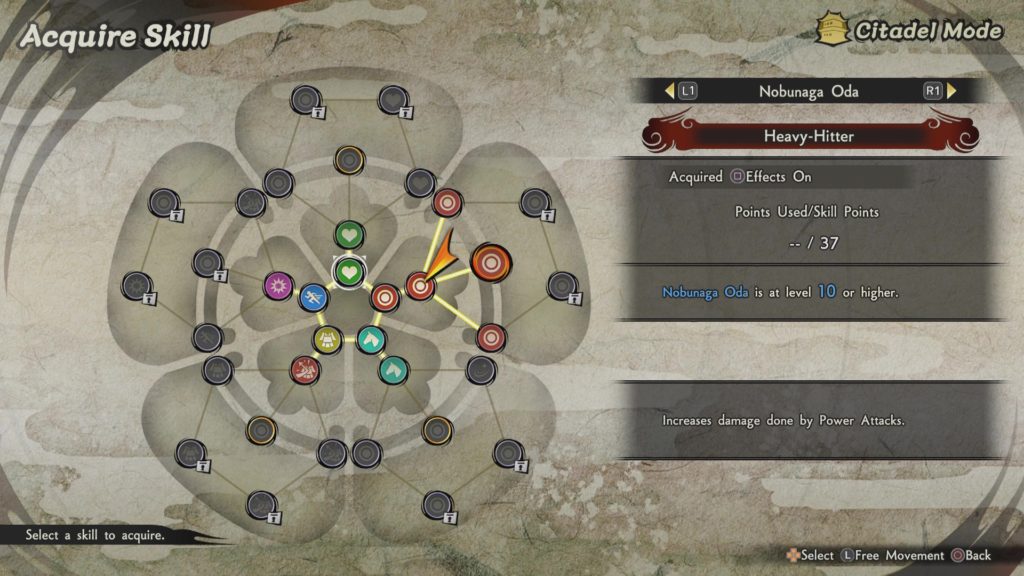
Of these, the Dojo presents some of the most interesting options, because not only can you level up your characters using bonus experience stockpiled after each mission, but you can also progress each character through their own distinct skill tree and increase their mastery of particular weapon types. The skill tree allows for some significant increases to characters’ power levels, while increasing weapon mastery allows them to wield more powerful weapons; you can also simply grind the latter by using a particular weapon in combat.
As you progress through Samurai Warriors 5, you’ll also get the ability to summon small troops of soldiers to your side, and these can also be upgraded. Starting with simple sword, spear or bow-wielding soldiers, you can subsequently upgrade to specialist units such as ninjas, and in doing so customise your own attack style; alternatively, you can simply beef up even the basic units to such a degree that they can be surprisingly formidable forces on the battlefield in their own right — great for holding strategically important locations while you’re off laying the smackdown on a particularly stubborn officer.
It should hopefully be clear by now that there is a lot to enjoy in Samurai Warriors 5 — and to cap it all, the whole thing is wrapped in some absolutely beautiful presentation. The new thick-outlined, cel-shaded look for the characters gives the impression that you’re looking at a high-quality colour battle manga come to life, and the addition of sumi-e and ukiyo-e-inspired effects and visual flourishes really gives the game a distinctive sense of style that is entirely in keeping with its setting.
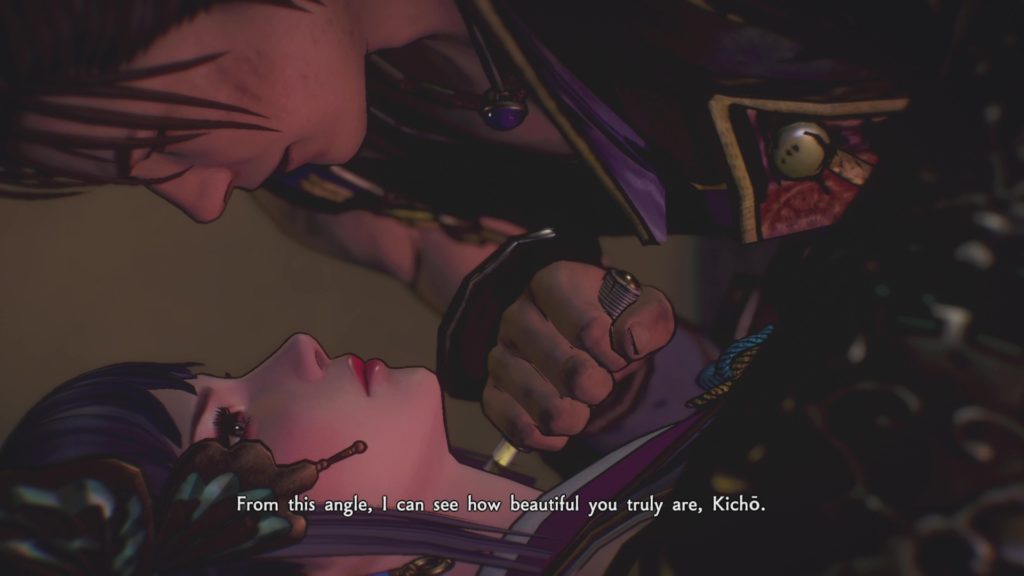
The music, too, while as gloriously anachronistic as it always has been for the Warriors series, fits well with the action — and the addition of dynamic remixing according to how intense the on-screen action is gives a fun sense of cinematic flair to everything that is going on.
The only area where the presentation lets things down a bit is when obviously pre-recorded video sequences are used for certain cutscenes rather than real-time in-engine graphics. This is likely done to reduce load times, but these sequences are often noticeably duller and less vibrantly colourful than their real-time counterparts — plus the noticeable video compression makes it a little jarring if you’re sensitive to such things. It’s ultimately a fairly minor issue, but it does stand out in a package that otherwise holds itself to a beautifully high standard so far as visual presentation is concerned.
I could easily go on about Samurai Warriors 5 for another two thousand words at this point, but for the sake of your sanity I will cut that there and simply say that this is one of the best Warriors games for a very long time — not to mention a great starting point for those new to the series. And who knows? It might even kick off a fascination with the real history of Japan — you certainly wouldn’t be the first to draw inspiration from Samurai Warriors in this way!
Screenshots from the PlayStation 4 version. Thanks to Nathan at Koei Tecmo for the review code.
Join The Discussion
Rice Digital Discord
Rice Digital Twitter
Rice Digital Facebook
Or write us a letter for the Rice Digital Friday Letters Page by clicking here!
Disclosure: Some links in this article may be affiliate links, which means we may earn a small commission if you make a purchase after clicking on them. This is at no additional cost to you and helps support Rice Digital!
- Letter from the Editor: passing the torch - June 30, 2023
- Super Woden GP 2 is looking promising - June 30, 2023
- Inti Creates is making a 32 bit-style Love Live action platformer - June 26, 2023





